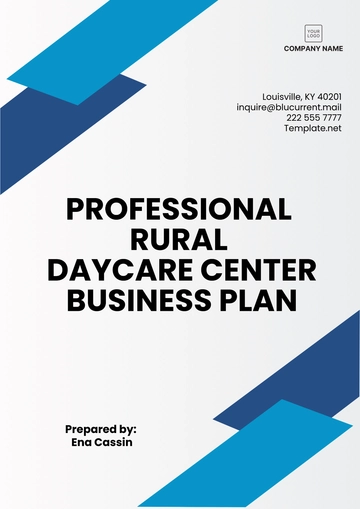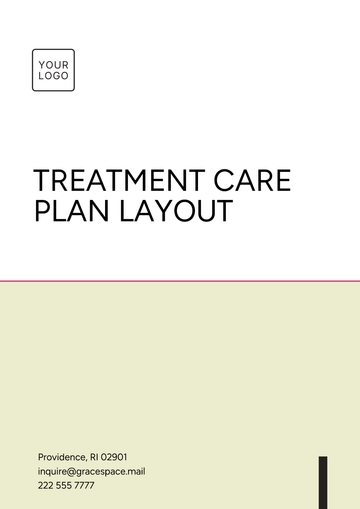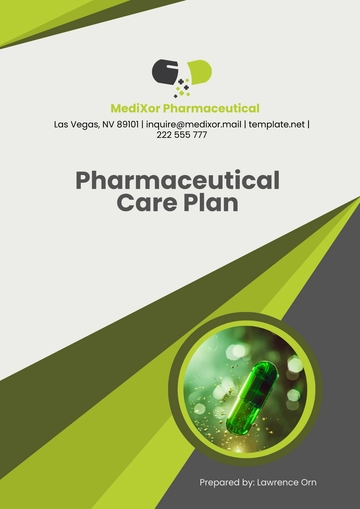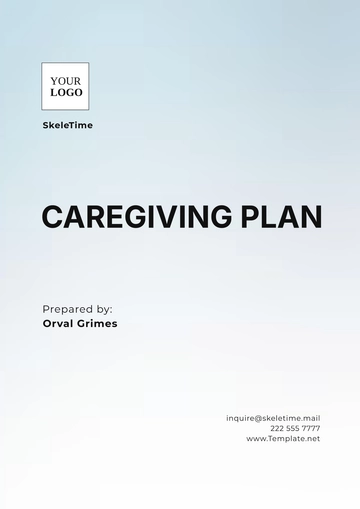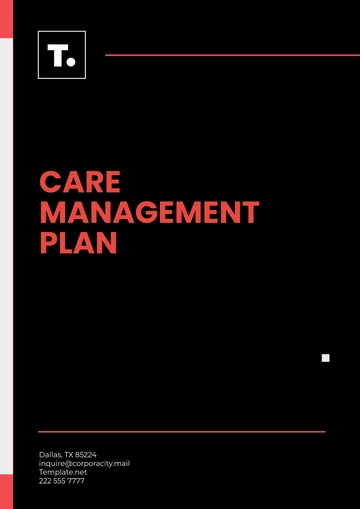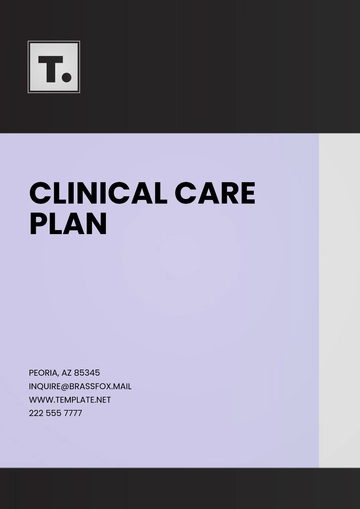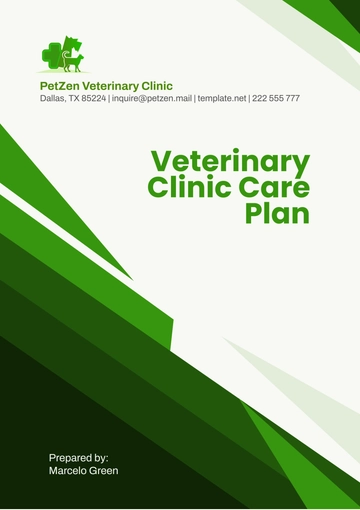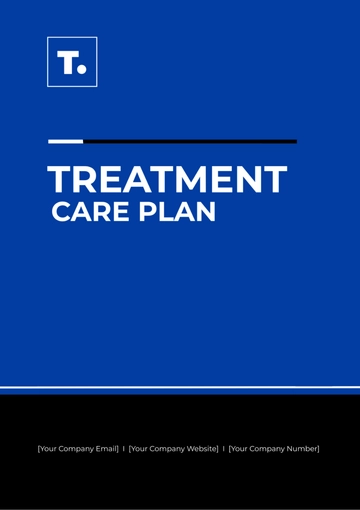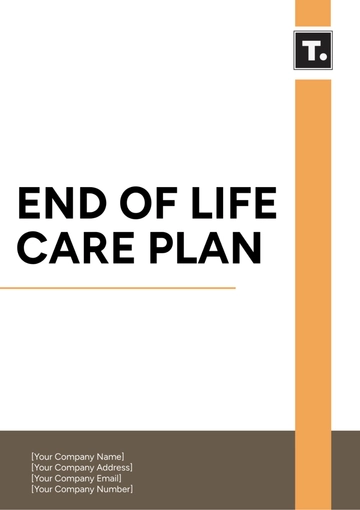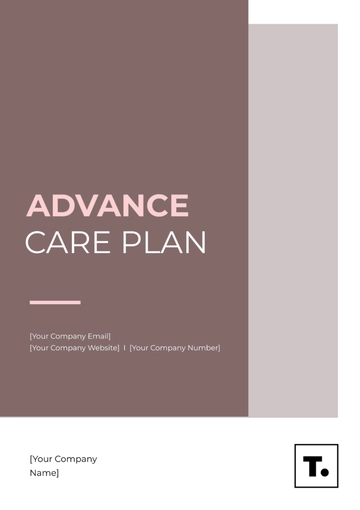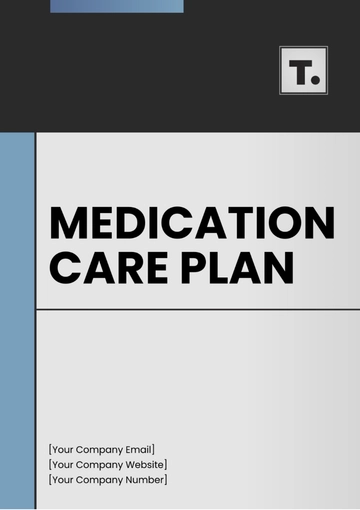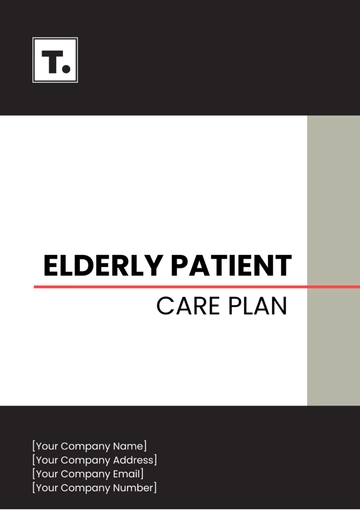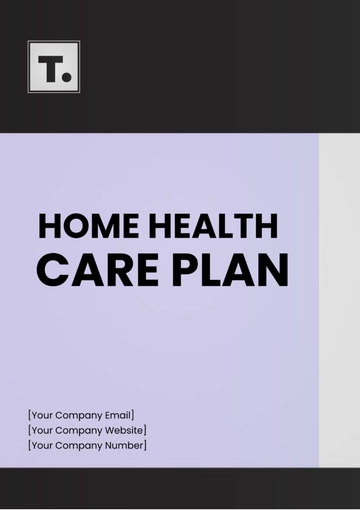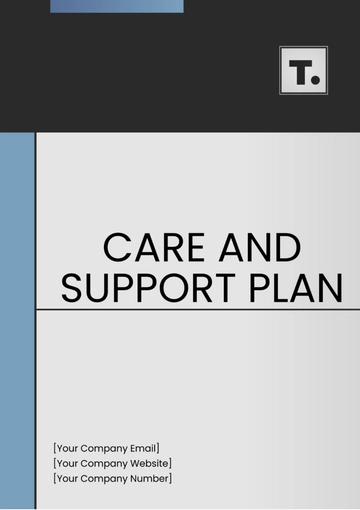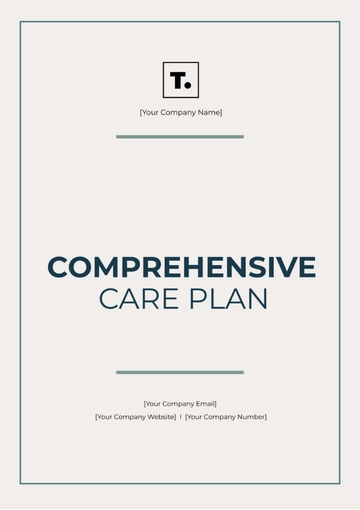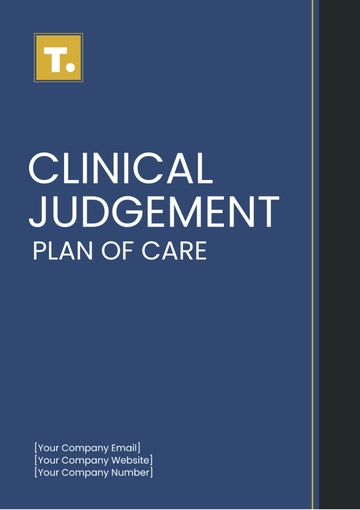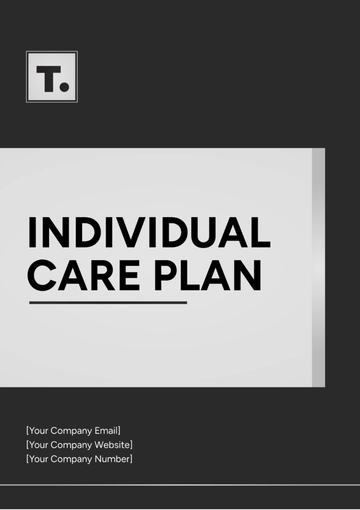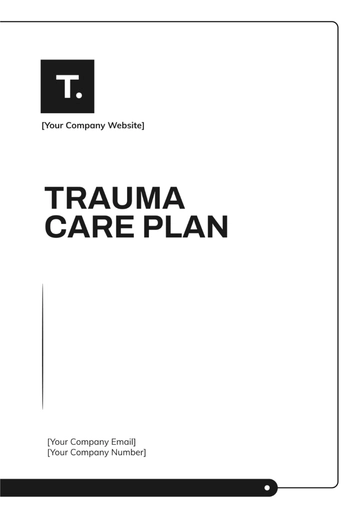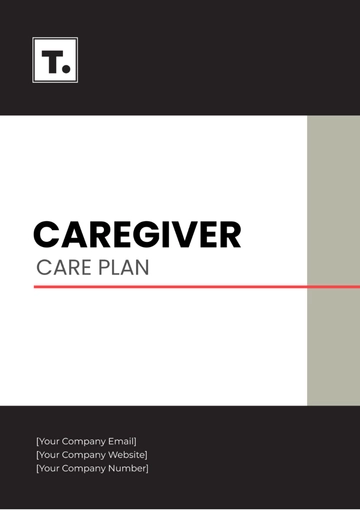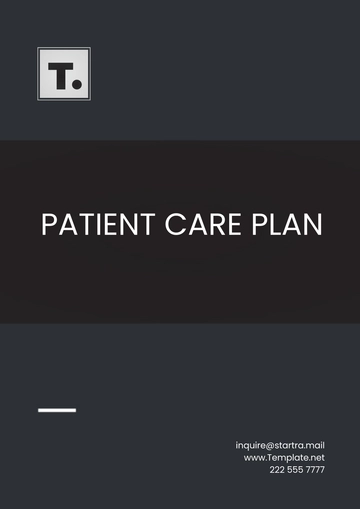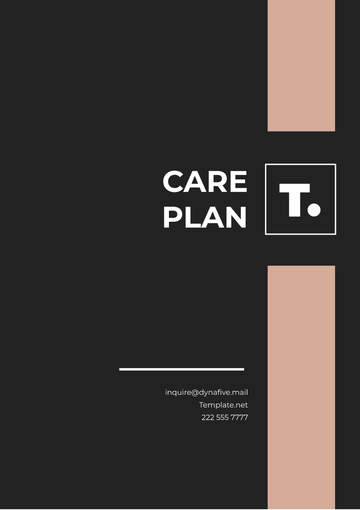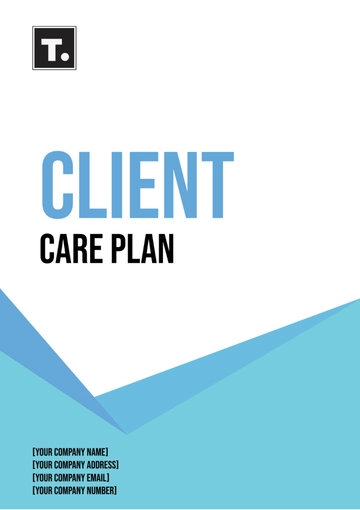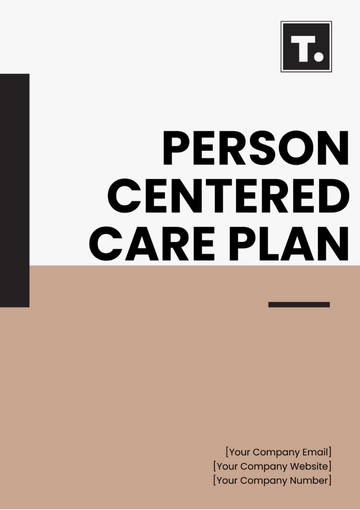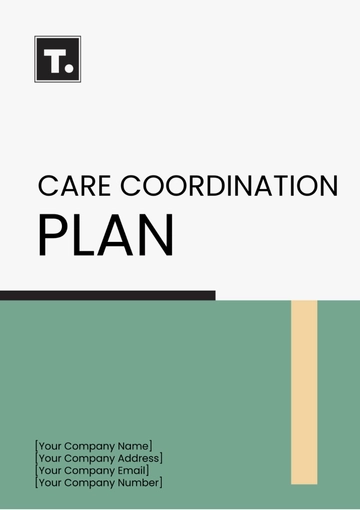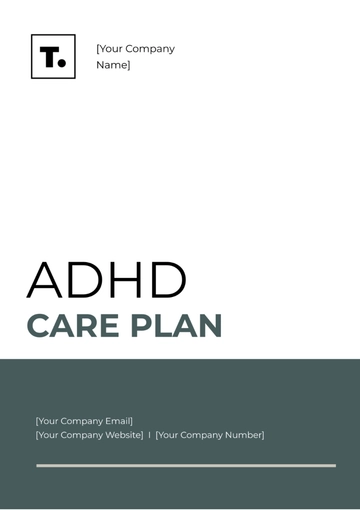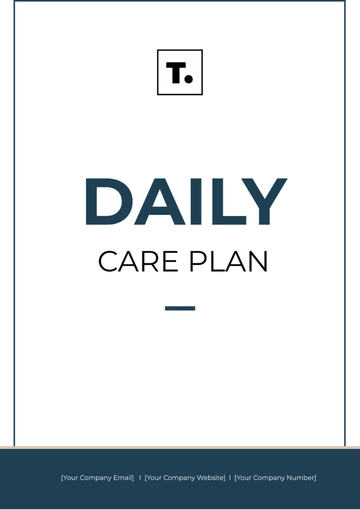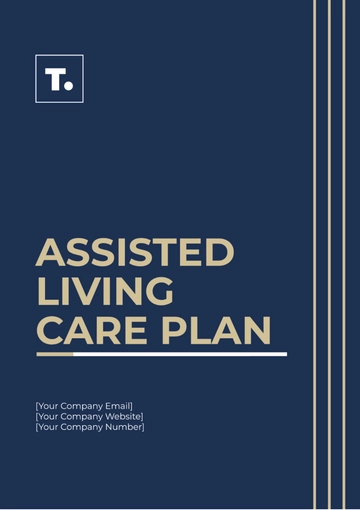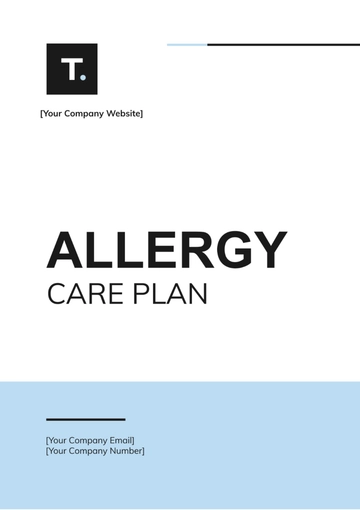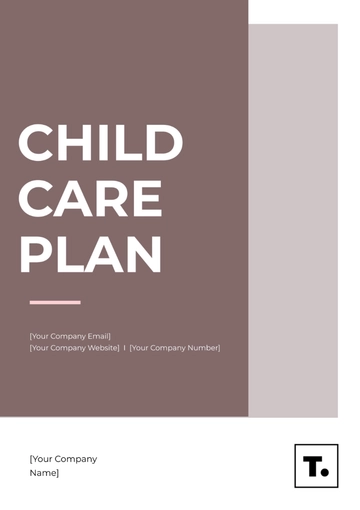Free Pharmaceutical Care Plan
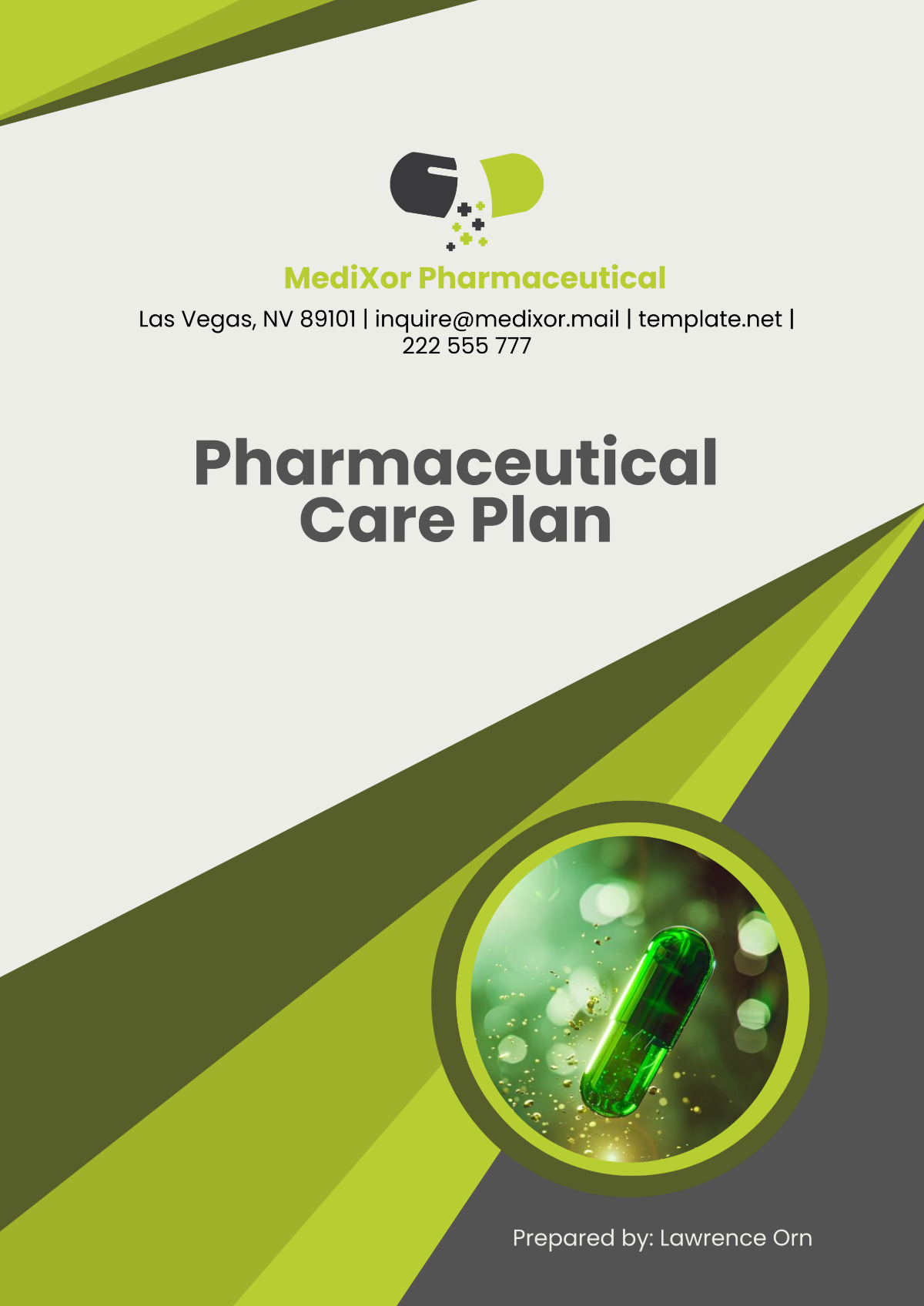
I. Introduction
This care plan encompasses health and safety measures, operational excellence, and environmental sustainability, ensuring a holistic approach to care. This outlines critical strategies and action plans aimed at improving workplace conditions, maintaining high-quality pharmaceutical production, and fostering a culture of accountability. By prioritizing care, [Your Company Name] aligns its operations with industry best practices and its commitment to global health outcomes.
A. Objective
The care plan seeks to enhance employee health, operational safety, and product quality. It ensures compliance with regulatory requirements and internal policies.
B. Scope
This plan covers all operational areas, from raw material sourcing to product delivery, emphasizing safety, efficiency, and sustainability.
II. Employee Health and Well-being
Protecting and promoting employee health is a cornerstone of the care plan. Ensuring a healthy workforce enhances productivity and morale while reducing absenteeism and workplace incidents.
Health Screenings: Routine health screenings are offered to employees to detect and address potential health concerns early. This preventive approach reduces the likelihood of severe conditions.
Mental Health Support: The company provides access to counseling services and wellness programs, recognizing the importance of mental health. Stress management workshops are also conducted regularly.
Workplace Ergonomics: Ergonomic assessments ensure that workstations and equipment minimize physical strain and injuries. Adjustments are made based on employee feedback and occupational health recommendations.
Fitness and Nutrition Programs: Subsidized gym memberships and on-site nutrition consultations encourage employees to adopt healthier lifestyles. Regular fitness challenges are organized to foster team spirit.
Sick Leave Policy: A flexible sick leave policy supports employees in recovering without fear of job insecurity. This policy emphasizes care and compassion over punitive measures.
III. Quality Control and Assurance
Ensuring product quality is a fundamental responsibility in the pharmaceutical sector. This section outlines measures to maintain high standards and prevent defects.
Aspect | Action | Responsible Team | Frequency |
|---|---|---|---|
Raw Material Testing | Conduct rigorous quality checks | QA Department | Per Batch |
Process Validation | Verify critical production steps | Production Team | Quarterly |
Equipment Calibration | Regular calibration and maintenance | Maintenance Department | Monthly |
End-product Sampling | Perform random sampling for defects | QA Team | Weekly |
Regulatory Compliance Audit | Review adherence to guidelines | Compliance Team | Annually |
Material Integrity: Rigorous testing ensures that raw materials meet required specifications, safeguarding product efficacy. Non-compliant materials are rejected to prevent downstream risks.
Validated Processes: Validation protocols verify that each step in production consistently produces high-quality results. Regular reviews ensure these protocols remain effective.
Equipment Maintenance: Timely calibration of machinery minimizes errors and ensures precision in manufacturing. Maintenance logs are meticulously kept for audit purposes.
Defect Detection: End-product sampling identifies defects early, preventing compromised products from reaching patients. Quality assurance teams prioritize these checks as a critical safeguard.
Regulatory Alignment: Adherence to industry regulations builds trust with stakeholders and protects the company from legal risks. Annual audits ensure compliance is up to date.
IV. Workplace Safety and Risk Management
Ensuring workplace safety minimizes hazards and promotes a secure working environment for employees. This section emphasizes proactive measures and systematic risk assessments.
Hazard Type | Identified Risk | Mitigation Plan |
|---|---|---|
Chemical Exposure | Skin and respiratory irritation | PPE and ventilation upgrades |
Slip and Trip Hazards | Wet floors, uneven surfaces | Regular inspections |
Electrical Malfunctions | Short circuits, electrocution risk | Scheduled electrical checks |
Machinery Accidents | Operator injuries | Training and safety barriers |
Fire Hazards | Flammable materials in storage | Fire drills and updated alarms |
Hazard Identification: Regular risk assessments identify potential workplace hazards before they escalate into incidents. Prioritized mitigation plans address high-risk areas first.
PPE Implementation: Employees are provided with appropriate personal protective equipment (PPE) for their roles. Training sessions ensure proper use and maintenance of PPE.
Incident Response: Emergency response teams are trained to handle incidents swiftly and effectively. Drills are conducted to prepare employees for potential emergencies.
Safety Audits: Quarterly audits review workplace safety measures and identify areas for improvement. Findings are communicated transparently to all stakeholders.
Employee Engagement: Feedback from employees is actively sought to improve safety protocols. Workers are encouraged to report hazards or near-misses without fear of repercussions.
V. Environmental Sustainability
As a pharmaceutical company, [Your Company Name] recognizes its responsibility to minimize environmental impact. Sustainability initiatives are integrated into daily operations to protect resources and promote ecological health.
Initiative | Target | Timeline | Status |
|---|---|---|---|
Transition to renewable energy | 75% energy from renewables | 2055 | In progress |
Reduce hazardous waste output | 20% reduction | 2052 | Active |
Install water recycling systems | 50% reduction in usage | 2053 | Planned |
Use biodegradable materials | 100% green packaging | 2055 | Active |
Upgrade to low-emission equipment | 30% reduction in emissions | 2054 | Scheduled |
Energy Transition: Moving towards renewable energy sources reduces the company’s carbon footprint while enhancing energy resilience. Solar and wind installations are planned for key facilities.
Waste Reduction: Hazardous waste management protocols include proper disposal and recycling initiatives. Employee training ensures compliance with these measures.
Water Conservation: Investments in water recycling systems aim to significantly cut water usage while maintaining operational efficiency. Pilot programs have shown promising results.
Eco-friendly Packaging: Switching to biodegradable materials for product packaging reduces environmental impact without compromising product safety. Suppliers are carefully selected for this purpose.
Emissions Control: Upgrading equipment to meet low-emission standards ensures adherence to environmental regulations. Monitoring systems are installed to track progress.
VI. Budget Overview
Effective implementation of a care plan requires a well-structured and adequately funded budget. The financial allocation ensures that all initiatives are executed seamlessly, with resources distributed across various key areas. This section outlines the estimated budget for each component of the care plan, ensuring alignment with the company's strategic priorities.
Category | Allocated Budget |
|---|---|
Employee Health Programs | $500,000 |
Quality Control | $750,000 |
Workplace Safety | $600,000 |
Environmental Sustainability | $900,000 |
Stakeholder Engagement | $250,000 |
Contingency Funds | $300,000 |
Employee Health Programs: Allocating [$500,000] ensures comprehensive health and wellness initiatives for employees. This includes preventive health measures, fitness programs, and mental health support.
Quality Assurance Investments: With [$750,000] allocated, the company can maintain rigorous quality control processes. This budget supports testing, validation, and equipment maintenance to uphold product standards.
Workplace Safety Measures: Safety initiatives receive [$600,000], covering essential PPE, risk mitigation training, and emergency preparedness. This reduces workplace accidents and ensures compliance with safety regulations.
Sustainability Projects: A significant [$900,000] is allocated to sustainability, reflecting the company’s commitment to environmental responsibility. This funding supports renewable energy adoption, waste reduction, and water conservation.
Contingency Planning: [$300,000] is set aside as contingency funds to address unforeseen challenges or emergencies. This ensures flexibility and resilience in executing the care plan.
VII. Next Steps
To ensure continuous improvement, the care plan will evolve with changing needs and circumstances. Next steps will focus on enhancing current initiatives and exploring innovative strategies for better outcomes.
Comprehensive Evaluation: Regular reviews of the care plan will assess its effectiveness and guide updates. Employee and stakeholder feedback will play a crucial role.
Advanced Training: Specialized training modules will be developed to address emerging risks and industry trends. Automation and digital tools will support this effort.
Technology Integration: Investments in advanced technologies, including AI-driven quality control, will enhance efficiency and safety across operations.
Collaborative Efforts: Partnerships with industry peers and regulatory bodies will strengthen collective efforts to improve safety and sustainability in the pharmaceutical sector.
By implementing this care plan, [Your Company Name] reaffirms its commitment to excellence, safety, and sustainability, ensuring continued success and trust from employees, patients, and stakeholders alike.
- 100% Customizable, free editor
- Access 1 Million+ Templates, photo’s & graphics
- Download or share as a template
- Click and replace photos, graphics, text, backgrounds
- Resize, crop, AI write & more
- Access advanced editor
The Pharmaceutical Care Plan Template from Template.net provides a comprehensive structure for developing personalized care plans for patients. This editable and customizable template includes fields for medication schedules, treatment goals, and progress tracking. The Ai Editor Tool allows users to tailor the template to suit diverse patient needs and clinical guidelines.
You may also like
- Finance Plan
- Construction Plan
- Sales Plan
- Development Plan
- Career Plan
- Budget Plan
- HR Plan
- Education Plan
- Transition Plan
- Work Plan
- Training Plan
- Communication Plan
- Operation Plan
- Health And Safety Plan
- Strategy Plan
- Professional Development Plan
- Advertising Plan
- Risk Management Plan
- Restaurant Plan
- School Plan
- Nursing Home Patient Care Plan
- Nursing Care Plan
- Plan Event
- Startup Plan
- Social Media Plan
- Staffing Plan
- Annual Plan
- Content Plan
- Payment Plan
- Implementation Plan
- Hotel Plan
- Workout Plan
- Accounting Plan
- Campaign Plan
- Essay Plan
- 30 60 90 Day Plan
- Research Plan
- Recruitment Plan
- 90 Day Plan
- Quarterly Plan
- Emergency Plan
- 5 Year Plan
- Gym Plan
- Personal Plan
- IT and Software Plan
- Treatment Plan
- Real Estate Plan
- Law Firm Plan
- Healthcare Plan
- Improvement Plan
- Media Plan
- 5 Year Business Plan
- Learning Plan
- Marketing Campaign Plan
- Travel Agency Plan
- Cleaning Services Plan
- Interior Design Plan
- Performance Plan
- PR Plan
- Birth Plan
- Life Plan
- SEO Plan
- Disaster Recovery Plan
- Continuity Plan
- Launch Plan
- Legal Plan
- Behavior Plan
- Performance Improvement Plan
- Salon Plan
- Security Plan
- Security Management Plan
- Employee Development Plan
- Quality Plan
- Service Improvement Plan
- Growth Plan
- Incident Response Plan
- Basketball Plan
- Emergency Action Plan
- Product Launch Plan
- Spa Plan
- Employee Training Plan
- Data Analysis Plan
- Employee Action Plan
- Territory Plan
- Audit Plan
- Classroom Plan
- Activity Plan
- Parenting Plan
- Care Plan
- Project Execution Plan
- Exercise Plan
- Internship Plan
- Software Development Plan
- Continuous Improvement Plan
- Leave Plan
- 90 Day Sales Plan
- Advertising Agency Plan
- Employee Transition Plan
- Smart Action Plan
- Workplace Safety Plan
- Behavior Change Plan
- Contingency Plan
- Continuity of Operations Plan
- Health Plan
- Quality Control Plan
- Self Plan
- Sports Development Plan
- Change Management Plan
- Ecommerce Plan
- Personal Financial Plan
- Process Improvement Plan
- 30-60-90 Day Sales Plan
- Crisis Management Plan
- Engagement Plan
- Execution Plan
- Pandemic Plan
- Quality Assurance Plan
- Service Continuity Plan
- Agile Project Plan
- Fundraising Plan
- Job Transition Plan
- Asset Maintenance Plan
- Maintenance Plan
- Software Test Plan
- Staff Training and Development Plan
- 3 Year Plan
- Brand Activation Plan
- Release Plan
- Resource Plan
- Risk Mitigation Plan
- Teacher Plan
- 30 60 90 Day Plan for New Manager
- Food Safety Plan
- Food Truck Plan
- Hiring Plan
- Quality Management Plan
- Wellness Plan
- Behavior Intervention Plan
- Bonus Plan
- Investment Plan
- Maternity Leave Plan
- Pandemic Response Plan
- Succession Planning
- Coaching Plan
- Configuration Management Plan
- Remote Work Plan
- Self Care Plan
- Teaching Plan
- 100-Day Plan
- HACCP Plan
- Student Plan
- Sustainability Plan
- 30 60 90 Day Plan for Interview
- Access Plan
- Site Specific Safety Plan
